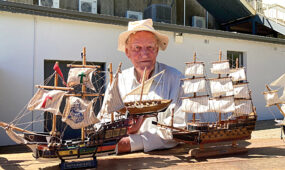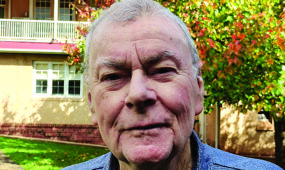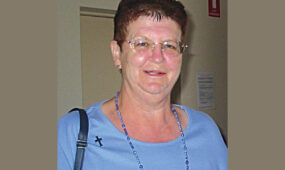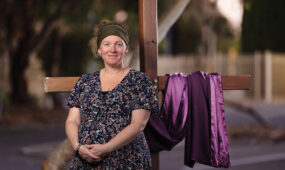Pilgrimage to Poland
People
Mount Barker parishioner Mary Mencel, 81, had a remarkable start to life, and this winter her 22-year-old grandson JACK MENCEL was blessed with the chance to learn about it firsthand. This is his account of their recent trip to Poland.
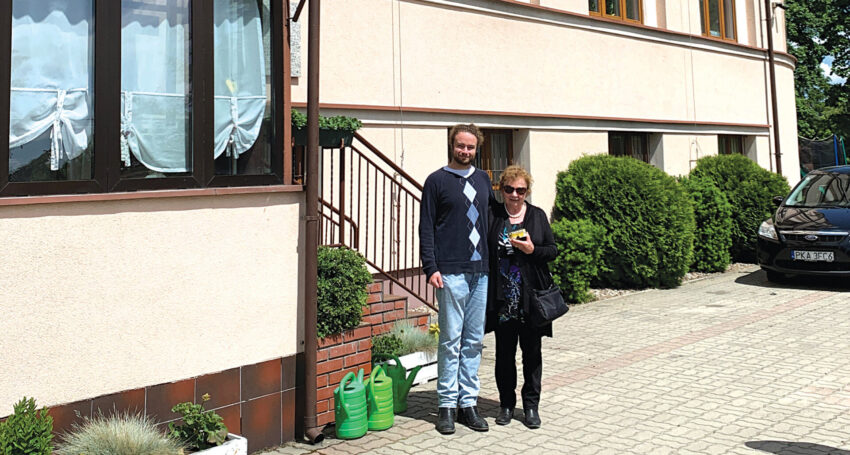
Mary is my grandmother, or ‘babcia’ as I call her, owing to her Polish background. She came from Poland to Adelaide in 1960 at the age of 18. Here she met and married my grandfather, a fellow Pole, with whom she had two daughters and a son, my father.
Growing up I would hear stories from my babcia about her time in Poland. As a curious grandchild I was always eager to learn more and I would often ask about this chapter in her life. Ever since then I have dreamt of going to Poland to see the places she described with my own eyes. It was therefore cause for great excitement when this year the opportunity presented itself to join my father on a work trip to Europe and my elderly babcia expressed her willingness to join us on this journey to show me these places herself.
Advertisement
Mary was born in Germany in 1942 to Polish parents taken as forced labourers by the Nazis. A year later her younger brother was born, and due to their parent’s situation both children were sent back to their mother’s hometown to live with their grandfather. This hometown was a small village in the middle of Poland called Koźminek.
As we drove into Koźminek I was struck by the beauty of the area. Koźminek is located in Kalisz County, an agricultural region brimming with lush greenery and thousands of beautiful flowers. Many are naturally occurring, while others such as granola, poppies and lavender are commercially grown. The village itself was humble but charming, with its approximately 2000 residents. After getting out of the car, Babcia led us to a small bridge at the edge of town and pointed to a clearing about 50 metres back from the creek. “That is where our house was,” she said.
So there it was, the location of the two-room straw cottage where my babcia spent her first years of life. There she lived in the care of her grandfather, along with her younger brother Jozef and the two children of her grandfather’s second marriage. When Mary was five, her grandfather passed away from pneumonia and so she and four-year-old Jozef were left to live in the cottage with their aunt and uncle, who were 12 and 14 at the time.
This astonishing arrangement ended abruptly after three months. One day the two children were collecting drinking water from the creek when Jozef slipped and fell in. He was being washed downstream when luckily a man dived in and saved him from an almost certain drowning. The man had seen the incident unfold while riding his horse across the bridge, the same bridge on which we were currently standing.
I had heard this story many times, and the experience of finally being in that place had quite an impact on me. The event also had quite the impact on my babcia too; in many ways it changed the course of her life. Asked by the rescuer where their parents were, they replied ‘we don’t have any’. Shocked, the man went straight to the parish priest who promptly arranged for Mary and Jozef to be taken into the care of the Catholic ‘dom dziecka’ (children’s house) located in the nearby village of Lisków.
So ended my babcia’s stay in Koźminek, although she didn’t quite accept it at the time. She told me that in her first few days at dom dziecka she couldn’t understand why she was there. ‘I’m from Koźminek, not Lisków,’ she thought at the time. When the first opportunity presented itself, she took Jozef by the hand and walked out of dom dziecka and down the road towards Koźminek. They made it more than two kilometres before a man going past on horse-drawn cart stopped them and took them back. “I had little legs, but they walked,” she recalled.
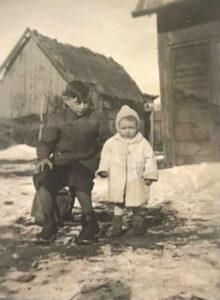
Mary Mencel as a young child with her step uncle Czeslaw.
Babcia soon settled into life at dom dziecka where she and many other children were cared for tirelessly by nuns of the Congregation of the Servants of the Blessed Virgin Mary of the Immaculate Conception. She has many memories which she shared with the current staff and children at dom dziecka when we visited. This experience was filled with extraordinarily special moments, least of all when, after digging through their archives, we discovered the hand-written document from 1947 detailing the admission of my babcia and her brother.
Advertisement
Our visit was clearly special to our hosts at dom dziecka too. My babcia was treated like a celebrity, for they do not often have a visitor who can tell them firsthand stories of what life there was like in the 1940s and 50s.
“It’s nice to be told these stories in person, rather than just reading about them,” one of the staff members said.
Babcia replied: “They’re not all rosy stories, but I prefer to tell it how it was.”
She did not hide the fact that life could sometimes feel institutionalised, owing to the overcrowding that beset such places in post-war times. We were given a tour through the building and walked through warmly decorated dorm rooms, accommodating two or three children each.
“It’s 100 per cent better than it used to be,” Babcia said, with tears in her eyes., adding that these same rooms would hold around 10 children at the time she lived there.
Despite this, my babcia maintains that her life was much better at dom dziecka than it would have been otherwise.
In fact, she said that many children at her school envied her and the other children from dom dziecka. In contrast to the poverty and hunger that characterised the lives of many families under Communist-ruled Poland, the children at the dom dziecka were well provided for, courtesy of the donations given by Catholic charities and parishes in America. Evidently this was too much for the Communist authorities, who took over control of dom dziecka shortly after my babcia left.
One of the staff told us: “When the Communists came, they told the nuns to take the children for a two hour walk in the forest. When they came back all of the religious iconography had been removed.”
Both the building and the quality of life for children deteriorated thereafter. It was because of this takeover that dom dziecka is still run by the Polish state today, though the post-communist period has seen it rejuvenated.
My babcia regularly mentions to me how grateful she is for the compassion, care and assistance provided by the nuns and the Church that supported them. Thanks to the work of the Church, my babcia was not only looked after during her youth, but eventually reunited with her mother. As it turned out, Babcia’s mother had survived the war and in the chaos of that time eventually made it to Adelaide. There, with the assistance of Father Rutkowski and the Catholic Archdiocese of Adelaide, they were able to locate my babcia and arrange for her to be brought to Australia.
Though she had little idea what she would look like, Babcia tells me that looking out from the boat at the hundreds of people waiting at the Port Melbourne docks, she spotted her mother instantly, being drawn to her “like a magnet”. This 1960 reunion between 18-year-old Mary and her mother was a truly emotional affair.
Our trip was also an emotional time. For myself, it was a chance to learn about my background and finally see, with Babcia at my side, the places I had heard so many stories about over the years. For my babcia, it was a precious chance to show one of her grandchildren the world she came from all those decades ago.
Ending this trip in the beautiful city of Vienna, we spent our last evening attending Mass at Peterskirche followed by dinner at the famous Café Central. Tired but happy, we enjoyed a delicious meal to the sound of a pianist playing everything from Mozart to Brubeck. As we sat together, Babcia turned to me and said “life is beautiful”.


